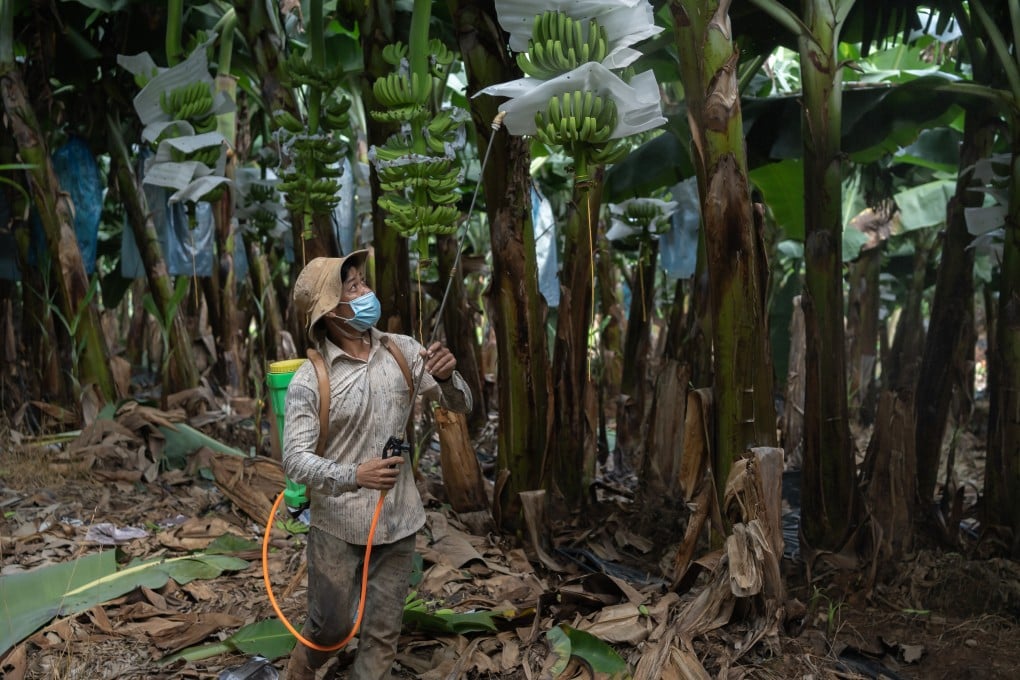China wants bananas. Cambodia’s banana workers, exporting mainly to China, are getting sick, blaming the chemicals they use. But no one is listening
- Cambodian banana exports to China have surged in recent years, but reports abound of exploitation and endangerment across Cambodia’s banana farms

When the inhabitants of Trapeang Rung learned in 2017 that a 1,000-hectare banana plantation would be established in their village by Longmate Agriculture and was set to provide hundreds of jobs, there was jubilation, recalls Kem Lot. The 59-year-old was hired by Longmate Agriculture in April 2018.
For the villagers, Longmate’s banana farm represented an opportunity – a rarity in the rural bowels of coastal Kampot province – and Kem Lot, like many of his neighbours in the small farming community, was excited by the prospect of not having to migrate elsewhere in Cambodia to pay off the debts he had taken on.
The prospect of earning US$230 a month for maintaining some 2,000 banana trees struck most as a good deal; some even sold their land to Longmate, which in return, Kem Lot says, promised them “work for life”.
“The company grabbed some land,” says Kem Lot, “other parts they bought for US$1,000 per hectare and even though the land was probably worth US$2,000 per hectare at the time, nobody protested – not even the land grabs – because the company promised work.”
The race for land that fuelled Cambodia’s banana boom can be traced back to 2018, when the Ministry of Agriculture, Forestry and Fisheries secured export rights to China by agreeing to meet Chinese sanitary and phytosanitary standards. Just five companies, including Longmate, were licensed to do so.
According to the agriculture ministry, Cambodia exported 32,821 tonnes of bananas in 2018, which increased almost fivefold in 2019 to 157,812 tonnes. By 2020, banana exports reached 343,812 tonnes with 16 companies licensed to export to the Chinese market, where demand was said to have reached 12 million tonnes per year.
